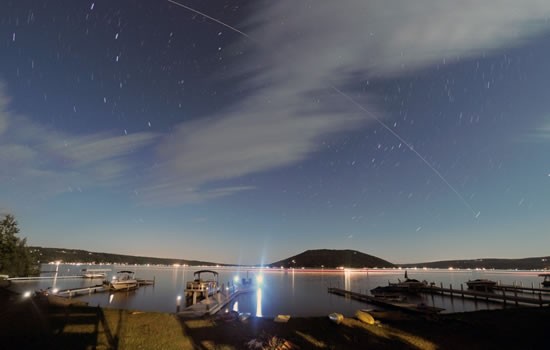― OUR HISTORY ―
Since 1956, the Keuka Lake Association (KLA) and its predecessor, the Keuka Lake Shore Property Owners (KLSPO) Association has been at the forefront of the advocating for the preservation and protection of Keuka Lake and its watershed. Prompted in part by particularly severe annual spring flooding in 1956, a small group of lake property owners recognized the need to form an association they hoped would be able to find solutions to this and other problems then confronting the lake.
The KLSPO soon targeted five areas for improvement. There were flood control (lake level), pollution (water quality), zoning (land use), motorboat control and conservation. Today’s ten standing committees of the Keuka Lake Association still reflect the concerns of the early pioneers of Keuka Lake’s preservation. The variability of Keuka’s water level had long been a concern, dating back to the early settlement of the region.
The first action of a newly formed Flood Control Committee was to engage the US Army Corps of Engineers in the dredging of the outlet channel and to conduct a study for improvement of flood control capability. The strategy involved drawing the lake level down in the late fall and early winter to prepare for the inevitable
annual increase in lake level caused by late winter snowmelt and spring rains. Today, the responsibility for managing the lake level rests with the Keuka Lake Outlet Compact (KLOC), an inter-municipal organization, established in 1990.
The Keuka Lake Shore Property Owners (KLSPO) recognized early on that the growing number of seasonal and permanent residences around the shore of the lake posed a threat to water quality. At that time, there was little or no regulation for the design and construction of septic systems. In 1963, a uniform watershed regulation ordinance was adopted, with the eight municipalities. In 1987, the KLSPO initiated a water-testing program.
In 1990, the KLSPO officially changed its name to the Keuka Lake Association. The following year, the KLA succeeded in establishing a Watershed Protection District consisting of the six towns and two villages around the lake, later becoming known as Keuka Watershed Improvement Cooperative (KWIC). This organization has been functioning for over twenty years and despite a few bumps in the road, and is viewed by some at both the state and federal levels as a model for inter-municipal cooperation in the management of lake wide water quality issues.
In 2015, the KLA began working very closely with the Yates County Cornell Cooperative Extension to deal with aquatic invasive species spread prevention including a watercraft steward program, public outreach and educational efforts. The education of the boating public is focused on clean, drain and dry actions intended to reduce the transport of harmful plant species into and out of Keuka Lake. This volunteer effort was aided by grants from NYS covering 2016-18 and 2019-21. More recently the KLA has entered into a joint development program with Seneca Lake to develop a nine element (9E) plan to monitor and document source inputs into our lakes that may be contributing to Hazardous Algae Blooms and identify potential corrective actions. KLA membership has grown to over 1600 members and is no longer just an association of lakeshore property owners. Watershed residents, recreational users and many local businesses are now members.
Volunteers manage the Keuka Lake Association with two Board Members for each Town (Urbana, Wayne, Pulteney, Milo, Jerusalem and Barrington with an additional “at-large” Board position for each. Our charter is to promote the understanding, preservation and improvement of the water quality, natural habitat and general environmental conditions of Keuka Lake and its watershed. Most important, each member of the KLA is committed to the Mission to “Preserve and Protect Keuka Lake and the Watershed for Current and Future Generations”.

